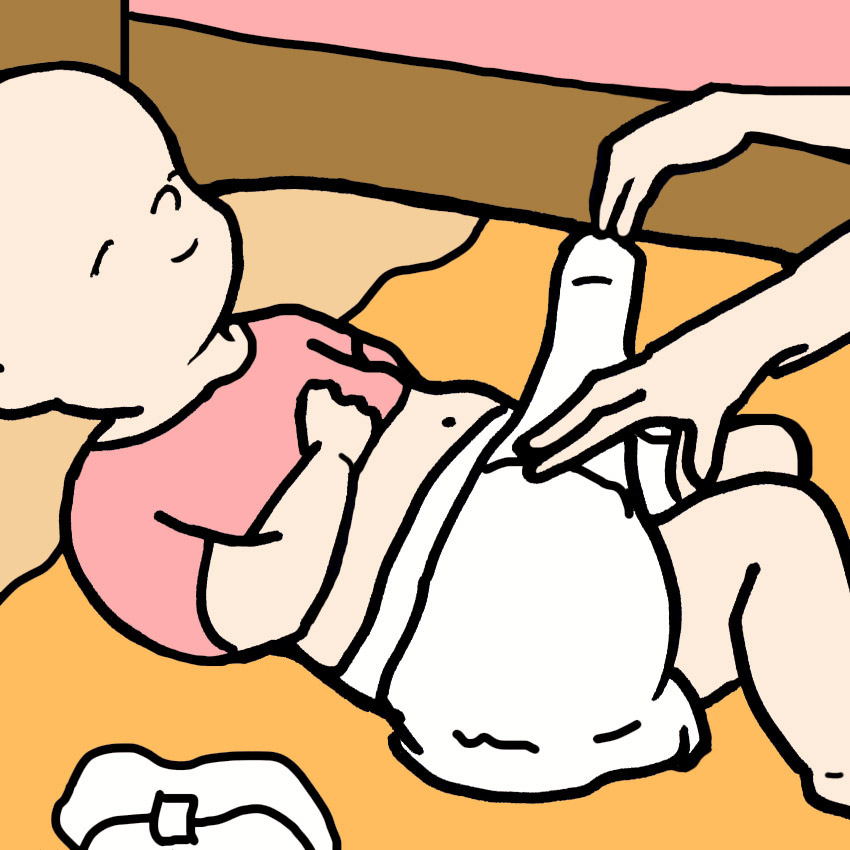
From the moment I saw those tell-tale pink lines on the pregnancy test, I knew I would be breastfeeding my baby. Admittedly, I was obsessed with the notion. Little did I know that Mother Nature was waiting in the wings with a basketful of curveballs for me.
My son was induced at more than a week overdue, and his birth was intense, to say the least. After three solid hours of pushing, and faced with the likelihood of a C-section, I allowed my doctor to vacuum-extract my nearly 9-pound baby.
The recovery was tough from the damage I sustained, and I struggled to stand or even sit up properly in the weeks after his birth. This naturally led to my struggling to nurse him as often as necessary, which — you guessed it — led to a low breast-milk supply.
While many births naturally lead into healthy breastfeeding relationships, sometimes they don’t. That's why we’re here to help you if you find yourself in a situation where you are truly experiencing low breast-milk supply and need to know how to produce more milk.
How To Tell If Baby Is Getting Enough Breast Milk

First, let’s talk about what low milk supply isn’t. Many new moms immediately think they need to increase milk supply when a baby nurses constantly or fusses after feedings, or when Mom's breasts begin to feel less full. However, according to kellymom.com, all of these things are perfectly normal for breastfeeding, and they don’t indicate milk supply issues at all. “It’s important to note that the feel of the breast, the behavior of your baby, the frequency of nursing, the sensation of letdown, or the amount you pump are not valid ways to determine if you have enough milk for your baby.”
The best way to reassure yourself that your baby is getting enough milk is to keep track of wet diapers over a 24-hour period. Clearly, there are people out there who understand how impossible this is, because they created apps like Total Baby Pro and Baby Connect that can help you track this. Of course, it’s perfectly okay to go low-tech and just keep track on paper, so do whatever works best for you. In addition to wet diapers, your pediatrician will keep track of baby’s weight gain with all those checkups you’ll have over the first weeks and months, which is good, because there isn’t an app for that!
What Causes Low Milk Supply

So, let’s suppose that despite your best efforts, your baby isn’t gaining weight as quickly as s/he should, and you’re not seeing those crucial wet diapers. It’s possible you do have a supply issue, and need to work on increasing milk supply. Below, we’ll discuss several factors outlined by todaysparent.com that can lead to low milk supply. We’ve also tested some tried and true ways to increase milk supply.
1. Supplementing With Formula
This is the number one way to tank your milk supply. Avoid supplementing with formula unless you absolutely have to, since breastfeeding is all about supply and demand. When you’re breastfeeding, your milk production is in harmony with baby’s demand for milk. When you start using even a small amount of formula, baby’s tummy will be full and s/he won’t need as much breastmilk. If you’re supplementing with formula, you’ll have to work twice as hard to increase milk supply, but rest assured, it can definitely be done!
2. Emotional/Physical Health Of Mother
I learned first-hand that if mom’s not okay, it will be twice as difficult to meet baby’s round-the-clock demand for milk. Take care of yourself, get help when you need it, and do everything in your power to catch some Zzz’s any chance you get.
3. Hormonal Issues In Mother
According to pcosdiva.com, conditions like Polycystic Ovary Syndrome can affect breastfeeding due to high levels of androgen hormones that inhibit milk-producing hormones (prolactin).
4. Previous Breast Surgery
If you’ve had any type of breast surgery, like a reduction, augmentation, or tumor removal, there’s a good chance that your milk ducts were damaged in the process, which can lead to milk-supply issues.
5. Anatomical Issues On Your Baby
Babies born with a cleft palate are much more likely to struggle with latching on to the breast. However, babies can also have a restricted frenulum that can make it difficult to extend the tongue. Your pediatrician can snip baby’s frenulum in a relatively painless procedure.
6. Skipping Night Feedings
It seems so unfair that you can’t leave baby with dad and a bottle for those overnight feedings. Unfortunately, going as long as eight hours without nursing yout baby in the early months can definitely cause your milk supply to dip. Remember, no demand equals no supply.
Natural Ways To Increase Breast-Milk Supply

If you’re a first-time mom who can afford to turn off your phone, shut the bedroom door, and take your baby to bed for several days and binge-watch Netflix, by all means, do it! This mini-vacation with baby by your side will help you to rest, de-stress, and learn your baby’s natural rhythms, which basically equates to lots of breastfeeding. This is one of the best ways to increase milk supply if you’re one of the lucky few who can pull it off.
However, if you have to return to work or if you’ve got other kids in the house, this method obviously won’t be possible. Don’t worry, though — there are many other options that are totally effective for increasing milk supply, which we will discuss in detail.
1. Power Pumping To Increase Milk Supply

Ahh, the pump. This overpriced humming machine will quickly become your best friend AND your worst enemy. But there’s no doubt that it can help you increase your milk supply! Power pumping is basically pumping to mimic cluster feeding, which is what happens when baby hits a growth spurt and wants to nurse constantly. Here, we’ll show you how to increase milk supply when pumping with recommendations from the experts at pregnancy.com.au:
1. Choose one hour each day (same time each day)
2. Pump for 20 minutes and rest for 10
3. Pump for another 10 minutes and rest for 10
4. Pump again for 10 minutes
2. Essential Oils To Increase Milk Supply

There are a few essential oils to increase milk supply, but you certainly can’t use these as a standalone solution. They should be used in conjunction with power pumping or some of the other methods outlined below, and they should be used with caution — never use any oil on your nipples, where baby could accidentally ingest it. Essential oils are highly concentrated and could be dangerous if swallowed.
Fennel oil: According to rootedblessings, fennel oil “is a potent extract from the plant and can be very helpful to support the body to help maintain healthy milk supply in Mom.” It is not recommended that you use fennel oil for more than 10 days at a time, since it has diuretic properties.
Basil oil: This works in much the same way as fennel oil, but you can use it longer since it is not a diuretic.
In order to use essential oils to increase milk supply, follow these simple steps:
1. Apply a few drops to the outer part of your breasts
2. Apply a few drops to your spine at the breast level
3. You can apply alone or mix with a carrier oil, like coconut oil
3. Foods And Drinks To Increase Milk Supply

If you’re looking for the most natural ways to increase breast milk, there are several foods and drinks that can help. Incorporating these foods and drinks into your diet alone or in combination with any of the other methods is a great start if you’re wondering how to increase breast milk.
1. Oatmeal
Oatmeal is not only delicious and healthy, it’s also a great way to boost milk supply naturally. Bonus points if you add flaxseed, another galactogogue, or food that increases milk supply. Incorporate oatmeal into your morning routine as soon as baby is born to amp up your supply, get your health on track, and get the milk flowing.
2. Lactation Tea
Many of the more popular commercial tea companies, like Traditional Medicinals and Yogi, are now offering lactation blends with fennel as the main ingredient. You can opt to pair this with your morning oatmeal, or drink it several times throughout the day to increase milk supply.
3. Lactation Cookies
Cookies that will increase milk supply? A true win-win situation! There are a host of recipes online for “lactation cookies.” These yummy wonders contain several ingredients that are widely recognized as foods to increase milk supply, and when else do you have carte blanche permission to eat cookies? There are several great recipes out there, but we found that no one does lactation cookies like Joanna Sargent at MilkMade Bake Shop. With an array of delectable flavors like banana bread, pumpkin spice, chocolate chip, and cranberry nut, these treats take lactation to a whole new level!
4. Herbal Supplements To Increase Milk Supply

If you’re wondering how to increase milk supply, many women have had great success with herbal supplements like fenugreek and blessed thistle.
1. Fenugreek
Fenugreek is one of the most popular supplements to increase milk supply, and is your best bet if you’re wondering how to increase your milk supply fast. Fenugreek can be taken alone or in combination with any of the other methods above. The recommended dose is three capsules taken three times daily. Fenugreek is said to be very effective at increasing milk supply, but there are two caveats: first, as mentioned above, if it’s going to work, it will work quickly; you should see results in as little as 24 to 48 hours. Secondly, when you ingest fenugreek in large quantities, you will begin to smell like maple syrup. We’re not talking a whiff here and there — prepare yourself, because you will smell like a walking, talking waffle. And not just that, your baby, your clothes, your baby’s diapers, and even the cat (OK, maybe not the cat) will also smell like maple syrup. That’s because fenugreek is used to flavor artificial maple syrup. It’s a harmless but super annoying side effect.
2. Blessed Thistle
This herb can also be used to increase milk supply, and most women take it in conjunction with fenugreek for maximum milk-boosting power. The dosage is the same: three capsules three times daily. As always when shopping for herbal supplements, try to buy the purest blend that you can find.
When To Seek Help
If you’re struggling with low milk supply, give these methods a try. Just remember, if you’re feeling worn out, depressed, and frustrated, it is perfectly OK to stop breastfeeding! You are a mom now with a little one who needs you to be at your best, so please take care of yourself and always seek the advice of your doctor or a lactation consultant.
If you plan to incorporate these methods to increase milk supply, please SHARE this article as a way to help other new moms as well!




